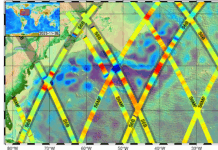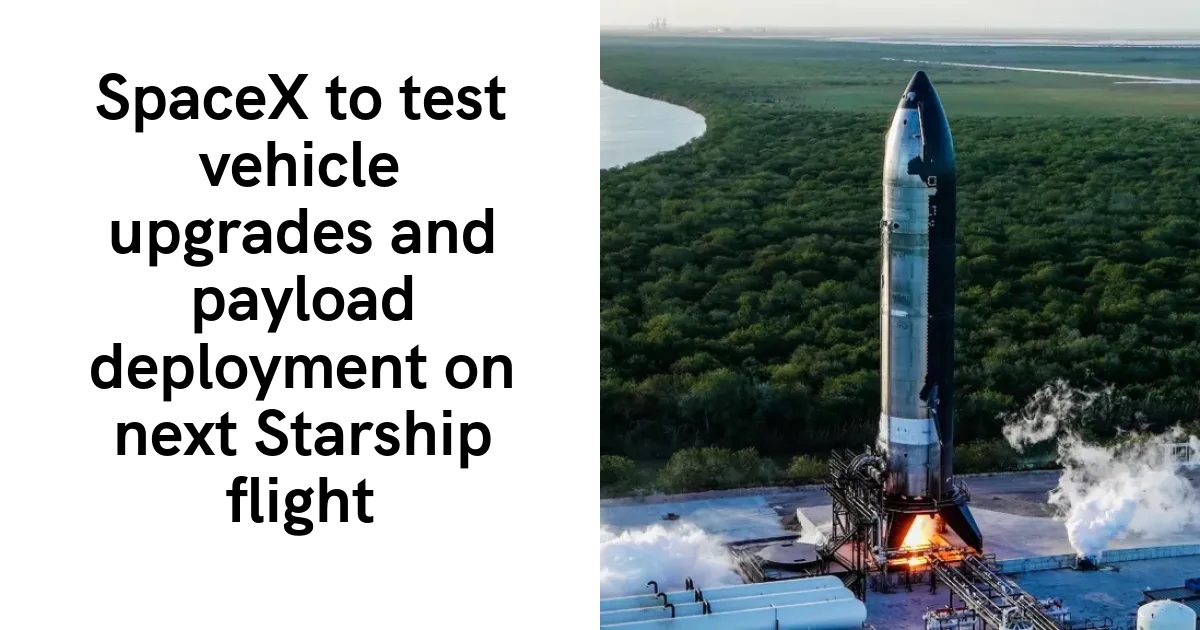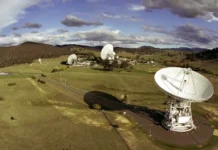In an exciting development for the space industry, SpaceX has announced a series of significant upgrades to its Starship vehicle, which are set to be tested on its next flight. This flight, which is planned for January 10, marks a pivotal moment as it will not only test these advancements but also conduct the vehicle’s first-ever payload deployments.
SpaceX shared these plans in a statement released on January 3, confirming previous hints from the company about the upcoming test being the first of a series of block upgrades to the Starship’s upper stage. This flight, the seventh in the series of Starship/Super Heavy tests, promises to offer valuable insights into the future capabilities of the spacecraft.
The upcoming flight is set to launch a new generation of the Starship, featuring substantial enhancements. These enhancements include the first attempt at payload deployment, multiple reentry experiments aimed at refining the ship’s catch and reuse abilities, as well as launching and returning the Super Heavy booster. These advancements are crucial for the continued development of SpaceX’s reusability goals, which are central to the company’s vision of reducing space travel costs and increasing the frequency of launches.
A key focus of the upgrades lies in the Starship’s forward flap design. This modification is intended to minimize the heating experienced during reentry, a critical aspect of ensuring the vehicle’s safe return to Earth. Additionally, the spacecraft will feature expanded propellant tanks that boast a 25% increase in volume compared to earlier designs. This increase in propellant volume is expected to extend the vehicle’s flight capabilities significantly.
The Starship will also benefit from a complete overhaul of its avionics system. This redesign includes state-of-the-art computers, antennas, and a new power distribution system. These changes are anticipated to enhance the vehicle’s reliability and performance, critical factors for the success of future missions.
Another important aspect of the upgrades involves the vehicle’s thermal protection system. The spacecraft will be equipped with the latest generation of heat shield tiles, complemented by a protective layer underneath. This layer is designed to safeguard the Starship in case any tiles become damaged or are missing. During the test flight, some tiles will be intentionally removed to assess how the vehicle copes with potential vulnerabilities. Additionally, metallic tile options, some of which will incorporate water cooling, will be tested. These advancements are essential for preparing the Starship for future missions where it will attempt to land the upper stage back at the launch site.
The Super Heavy booster for this mission will make history as the first to utilize previously flown hardware. Specifically, it will incorporate a single Raptor engine that was initially flown on the fifth Starship/Super Heavy test flight in October. This previous flight was notable for the successful return and “catch” of the booster at the launch site. SpaceX aims to achieve another successful catch of the Super Heavy booster during the upcoming launch, further demonstrating the reusability potential of their technology.
The upper stage of the Starship will follow a suborbital flight path, similar to several recent missions, eventually splashing down in the Indian Ocean. While in space, however, the Starship will conduct its first payload deployment. It will release 10 “Starlink simulators,” which are similar in size and mass to the next-generation Starlink satellites. These mass simulators will not enter orbit but will instead follow suborbital trajectories akin to the Starship itself.
Deploying the so-called “V3” Starlink satellites is projected to be a critical function of the Starship once it commences orbital flights. SpaceX has highlighted that with its unparalleled payload capacity and full reusability, the Starship will revolutionize global connectivity by deploying these advanced V3 Starlink satellites.
According to a recent “2024 Progress Report” on Starlink, the V3 Starlink satellites are designed specifically for launch on the Starship. Weighing approximately two tons each, these satellites will feature a remarkable one terabit per second of downlink capacity, which is ten times the capacity of the V2 Mini Starlink satellites that SpaceX currently launches. Additionally, they will offer 160 gigabits per second of uplink capacity, which is 24 times that of the V2 Mini satellites. Each V3 satellite will also have nearly four terabits per second of backhaul capacity, utilizing both radiofrequency and laser links. These specifications promise to significantly enhance global internet coverage and speed, bringing more reliable and faster internet connections to even the most remote areas.
In its announcement about the upcoming Starship flight, SpaceX did not specify an exact launch date. However, airspace restrictions have been published, indicating potential launch opportunities from January 10 through January 16. Most of these launches are scheduled for the late afternoon, with the exception of a morning launch on January 11.
In summary, SpaceX’s upcoming Starship test flight represents a significant step forward in the development of its spacecraft technology. The planned upgrades and tests are designed to improve the vehicle’s reusability, performance, and payload capacity, which are key elements in SpaceX’s long-term vision of making space travel more accessible and efficient. As the company continues to push the boundaries of what is possible, the world watches with anticipation to see how these advancements will shape the future of space exploration.
For those interested in following the progress of SpaceX and its Starship program, more information can be found by referring to the company’s official announcements and updates. These developments are not only exciting for space enthusiasts but also hold the potential to transform the way we connect with each other and explore the universe.
For more Information, Refer to this article.


































